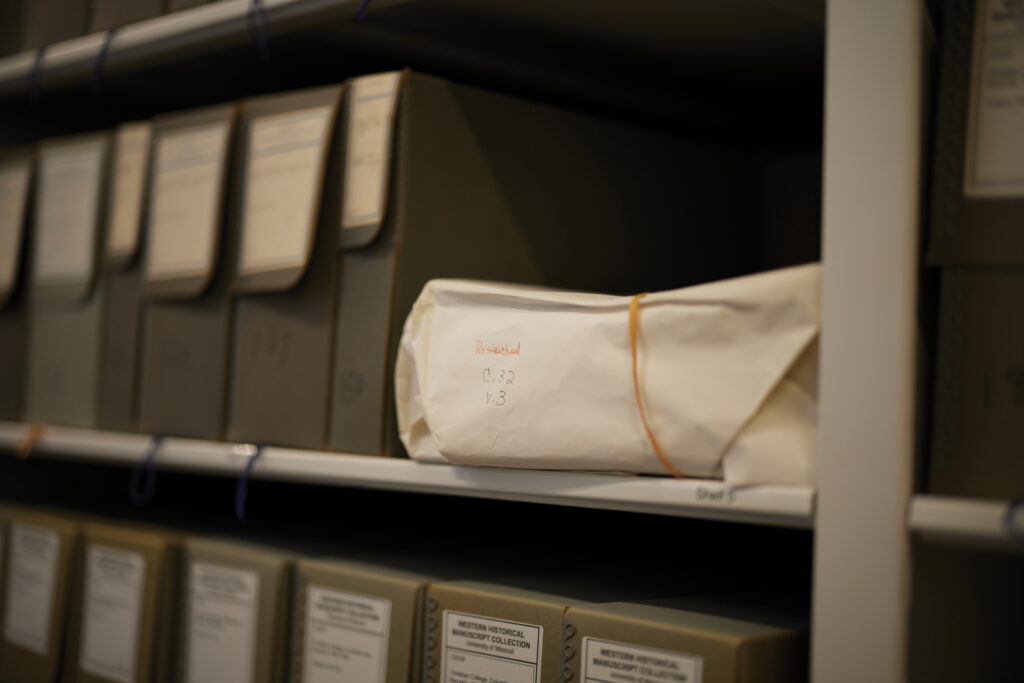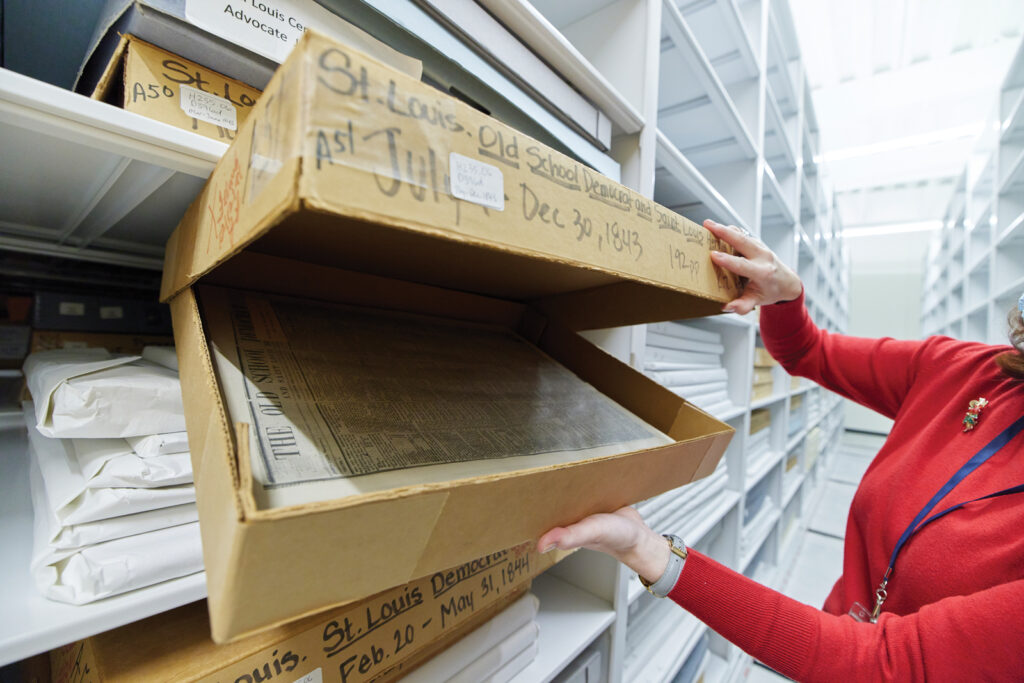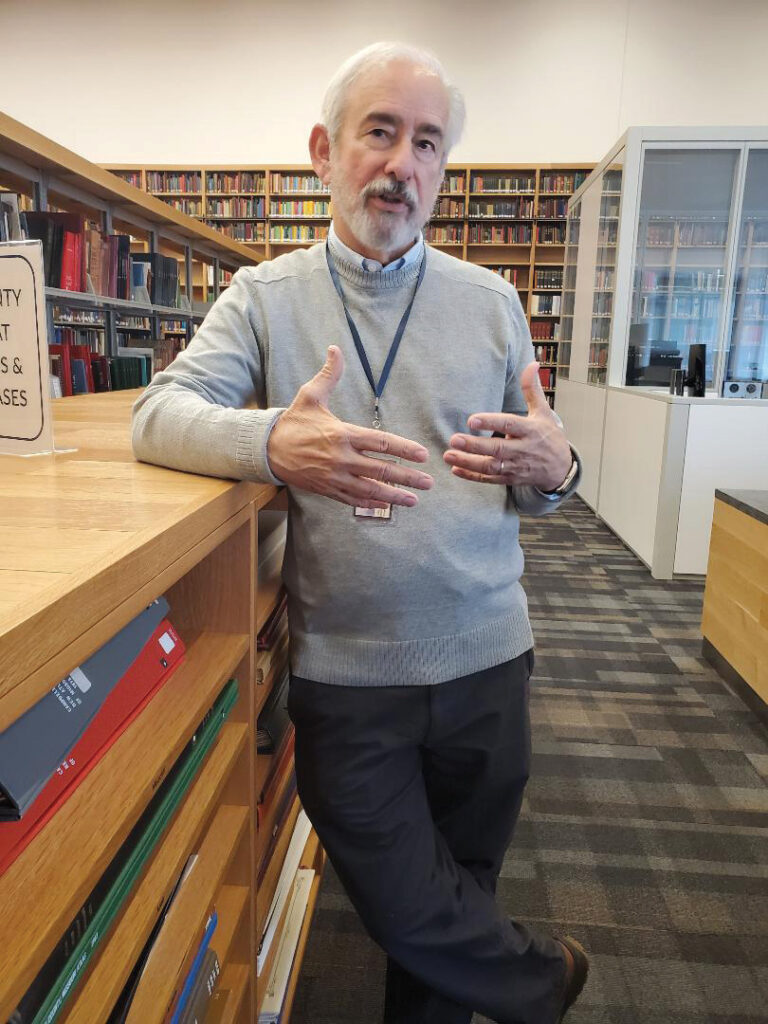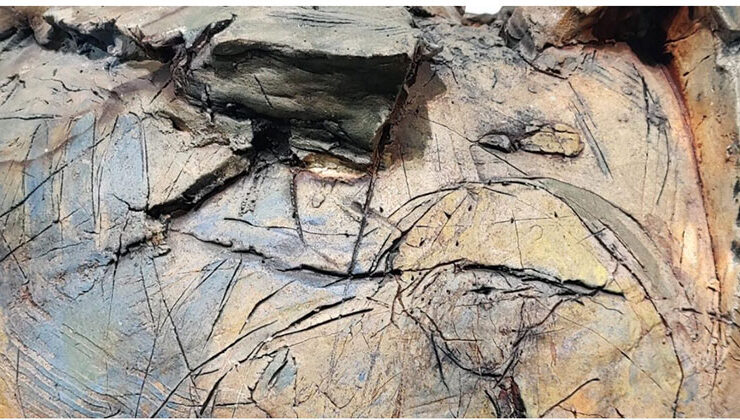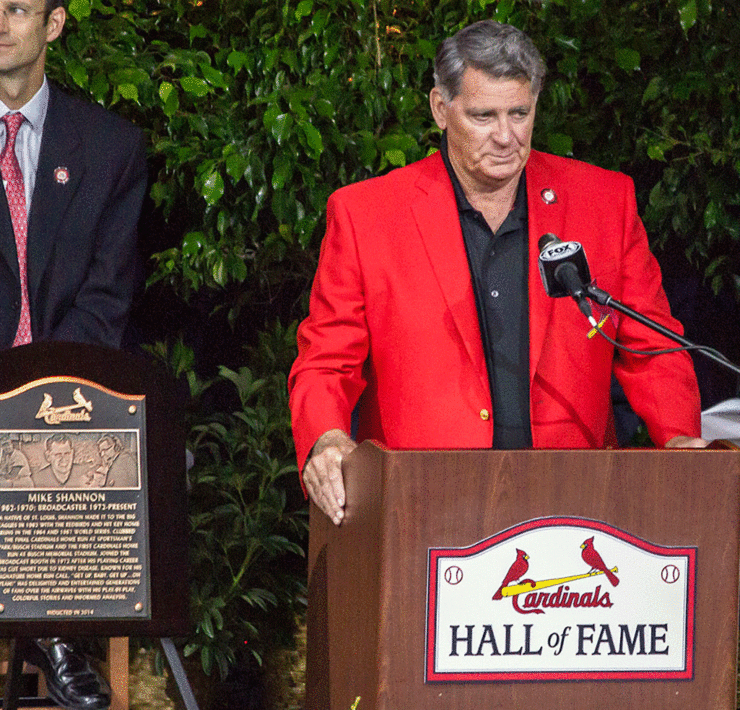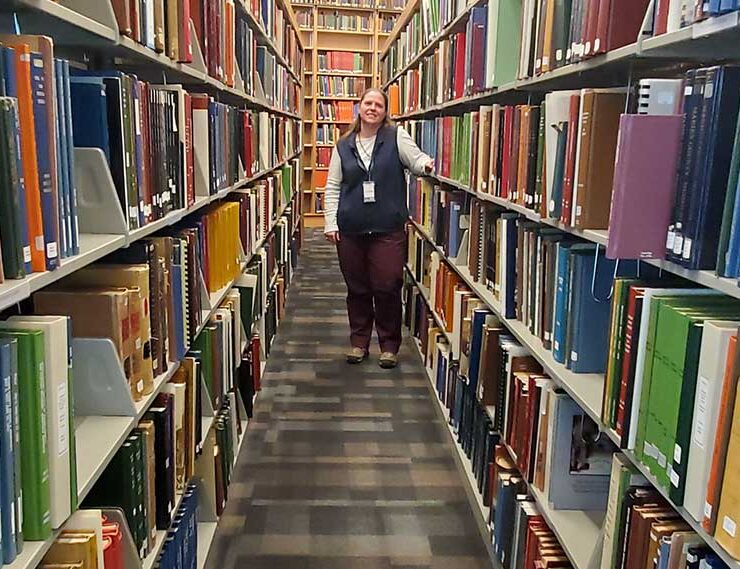Missouri’s ‘Unofficial’ State Historian is Retiring
- "Missouri’s ‘Unofficial’ State Historian is Retiring" originally appeared in the February 2025 "Passion Project" issue of COMO Magazine.
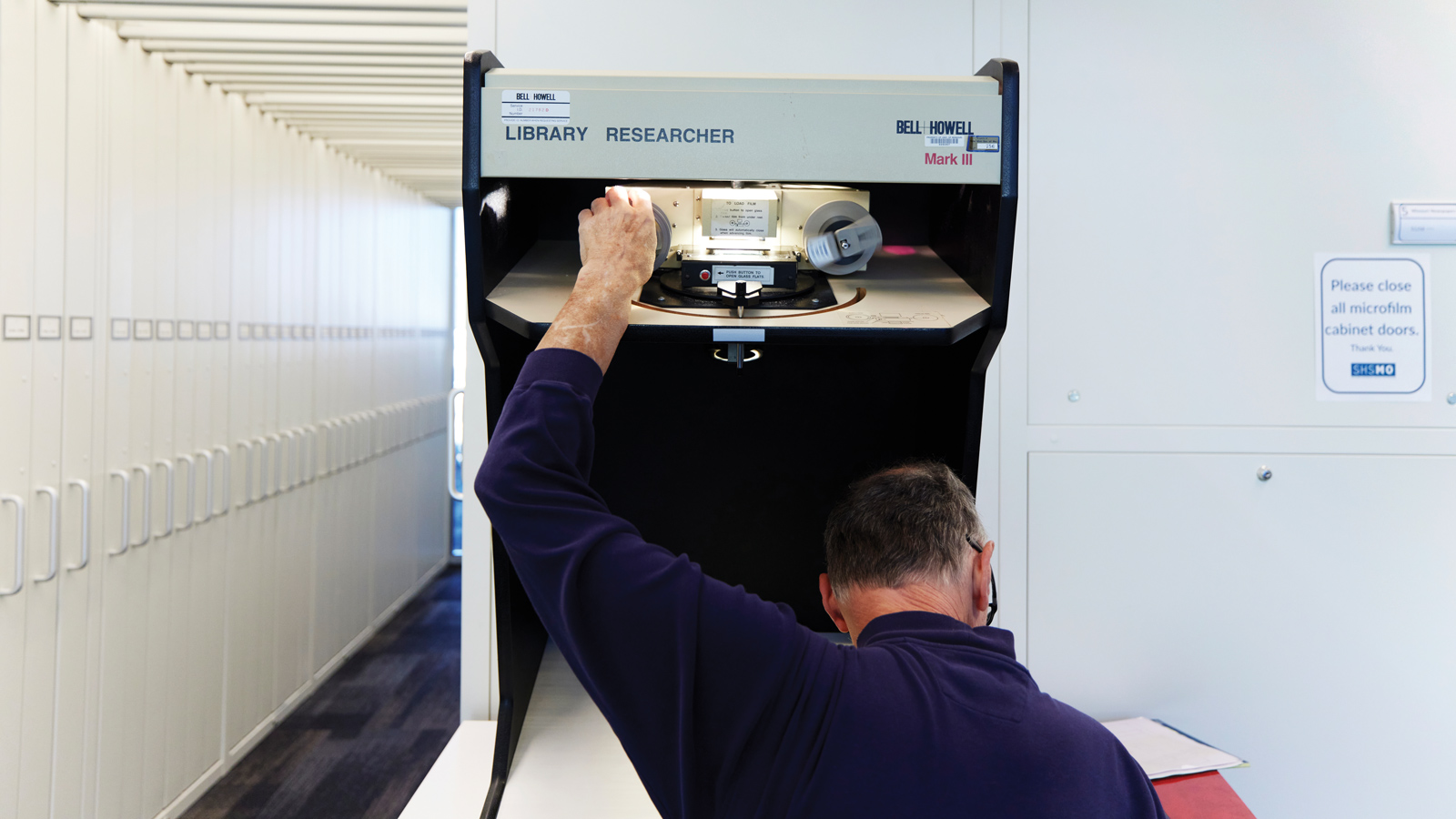
Gary Kremer will continue to pursue historical truths and discoveries about the Show-Me State.
At 76,700 square feet, the stately building at the corner of Sixth and Elm streets borders the University of Missouri-Columbia campus and the eastern edge of downtown Columbia’s Flat Branch area. You can’t miss it, but it still seems that the State Historical Society of Missouri (SHSMO) Center for Missouri Studies is something of a hidden gem.
“Not as much anymore,” said Gary Kremer, SHSMO’s executive director, gently pushing back at the “hidden gem” label. “We’re much better known than when we were in the basement of Ellis Library” on the MU campus.
It was a long journey from the cramped quarters below Ellis Library, where the SHSMO was located from 1915 to 2019, to its $35 million home at 605 Elm Street. And from a historical perspective, it has also been a long journey for Kremer, who recently announced he will retire in October 2025 after serving more than twenty-one years as the Society’s director.
There’s no question that Kremer will continue to be a face at the building that is a combination of art gallery, history museum, and an unparalleled, overflowing treasure trove for history and family genealogy researchers. His visits will probably be less frequent but no less purposeful and meaningful.
“This is the place to come to understand Missouri history,” he said during a recent walk through the building and the bright research library, where the papers of former governors Kit Bond, Sen. Roy Blunt, and dozens of other elected and public officials are organized and archived. “We’re adding things almost every day.”
Blunt, SHSMO’s president, has credited Kremer for his leadership.
“Gary Kremer has become the unofficial State Historian to many Missourians over the last two decades,” Blunt said in a news release that announced Kremer’s retirement. “Among the Society’s greatest achievements during Gary’s extraordinary leadership was securing $35 million in state bond funds for the construction of a new headquarters building.”
Among the center’s most impressive collections is the preservation, via microfilm and digitization, of the state’s newspapers. The Society was founded for that preservation purpose — though today’s preservation techniques were many decades away — in 1898 by the Missouri Press Association and has been supported by state funding since 1901. The collection begins with the July 26, 1808, issue of the St. Louis Missouri Gazette. The collection now includes more than seventy-two million pages preserved on some 58,000 reels of newspapers on microfilm.
“People come here for different reasons,” Kremer said, citing the center’s art collection, research area, or “just to sit and read … I simply want people to come through the doors and appreciate the fact that Missouri is an interesting place with a rich and complicated history.”
He spotted a lone student reading in an alcove and a pair of students quietly studying in another area. By design, the building features two “front” doors: One that opens to downtown to the north and one that opens to the Mizzou campus to the south.
“We get really busy when term papers are due,” he said, wearing a smile of satisfaction. “People come from all over the state — actually, all over the world — to do research here.”
The collections include 30,000 linear feet of material, including the papers of former Missouri Senator Claire McCaskill, University of Missouri founder James Rollins, and papers, letters, and diaries from the Civil War, travels on the Santa Fe Trail, World War I, church records, other non-public records, and countless other historical events.
Kremer noted that McCaskill’s papers were the first to come to the center already digitized. “They’re now coming to us on hard drives, not in boxes,” he added. And he conceded that he is envious of today’s students who can now locate historical documents and discoveries “that you just couldn’t find fifty years ago.”
Last fall marked fifty years since Kremer published his first essay on the African American experience in Missouri. At a public event on November 12, he discussed some of his most important findings from a half-century of research and writing about race in Missouri.
“I can’t believe it’s been fifty years,” he said, nodding in agreement with the phrase, “The more things change, the more they stay the same.”
Since Missouri’s beginnings, the state has featured quarrels about urban versus rural interests, the size of government, and lingering issues related to race.
“We still have not resolved the issue of race or the role of government,” he said. “Every governor we’ve ever had has talked about reducing the size of the budget, reducing taxes, and minimizing the role of government.”
Kremer’s knowledge has come the old-fashioned, hard way: personal study and digging and diving into reams of papers and stacks of boxes with historical records. As a result, he has written dozens of articles and five books on the topic of race in Missouri, a publishing record that an SHSMO news release touted as “unrivaled by any other scholar of the subject.” Kremer also cites how he benefitted from studying under and working with Black history pioneer Dr. Lorenzo J. Greene who taught history at Lincoln University in Jefferson City from 1933 to 1972.
Greene had been the research assistant for Carter G. Woodson, the man generally recognized as the father of the Black history movement. As fate would have it, Kremer became Green’s research assistant at Lincoln University, teaching there from 1972 to 1987.
“The last twenty years of his life, he was almost like a father figure to me,” Kremer said.
Greene taught that the purpose of teaching and learning history is “to search for the truth.”
“History is messy, filled with vagabonds and misguided people,” Kremer said. “It’s part of who we are. You can’t ignore that.”
A fifth-generation Missourian, Kremer earned his PhD from American University in Washington, D.C. In addition to teaching history at Lincoln University, he also taught at William Woods University in Fulton from 1991 to 2004. He also served as the state archivist from 1987 to 1991 — “making order out of chaos” — under Roy Blunt when the former senator was Missouri’s secretary of state. Kremer became SHSMO’s executive director in 2004. Blunt became a Society trustee in 2005.
In 2021, Kremer served on the Missouri Bicentennial Commission, which oversaw the planning of statewide bicentennial activities. The SHSMO served as the organizer of the bicentennial, which included more than 300 events, programs, and projects developed and carried out in communities across the state to commemorate the 200th anniversary of Missouri statehood. On Statehood Day, August 10, 2021, Kremer delivered the keynote speech at the State Capitol to commemorate the bicentennial.
He has written, coauthored, and coedited twelve books. His most recent book, This Place of Promise: A Historian’s Perspective on 200 Years of Missouri History shares his knowledge and personal experiences as he considers what being a Missourian has meant to all the state’s people. He has continued to publish articles, books, and papers on all aspects of Missouri. Kremer is the author of several books on George Washington Carver, including a biography of the world-famous chemist from Diamond, Missouri, who made important agricultural discoveries and inventions.
Kremer is currently pondering updates to his first book, which will probably be one reason he continues to use the resources at the center. He’ll continue research and writing.
“I don’t have a bucket list. I don’t plan any great changes,” he said. “But I won’t be coming into the office every day. And I’m perfectly content with that. I may hang out here sometimes, just using the collections.”
Kremer agrees with the observation that studying history, whether in a book, at a microfilm unit, or sorting through documents, can get the researcher off track with any number of “rabbit holes” of information – which is where some of the greatest discoveries are made.
His smile broadens.
“I find it endlessly fascinating. I’ve spent my life trying to understand the history of Missouri,” he said. “I’ll probably go to my grave still wondering.
State Historical Society of Missouri
The State Historical Society of Missouri collects stories from the past and the present to ensure Missouri’s history is preserved and shared. Holdings currently include:
- unique manuscript collections
- an extensive newspaper collection dating from 1808 with newspapers from all 114 Missouri counties and the city of St. Louis
- thousands of editorial cartoons that are national in scope
- rare and specialized books
- thousands of maps and photographic images
- oral histories
- an extensive art collection that includes major works by George Caleb Bingham and Thomas Hart Benton.
Publications, Public Programs, and Scholarship
In addition to caring for collections and working to provide easier access to records, SHSMO offers programs, lectures, and workshops as well as tours for school and community groups and in-depth orientation for secondary and university students conducting research.
Through its education initiative at the Center for Missouri Studies, the SHSMO administers National History Day in Missouri. More than 5,000 students in grades six through twelve participate in local and regional competitions each year, with nearly 600 advancing to the state contest in the spring.
The Center also publishes the Missouri Historical Review. The cornerstone of SHSMO’s publications program since 1906, this quarterly journal offers scholarly articles on diverse topics in Missouri history. An active book publisher, SHSMO’s publications have covered everything from editorial cartoons to German settlement.
